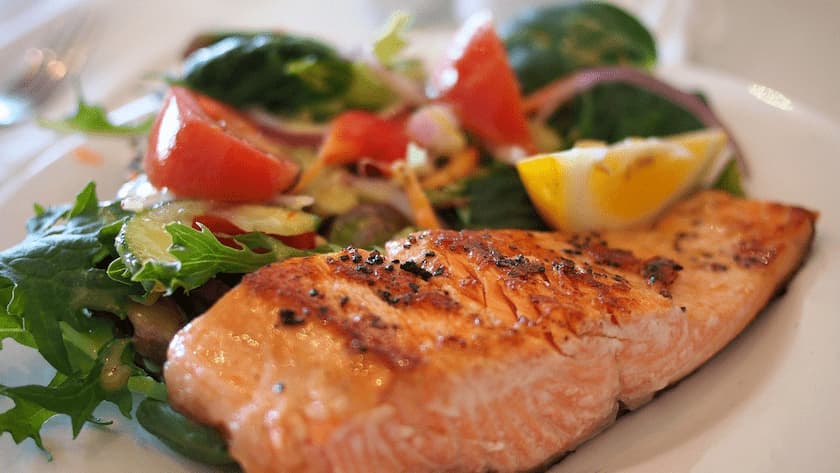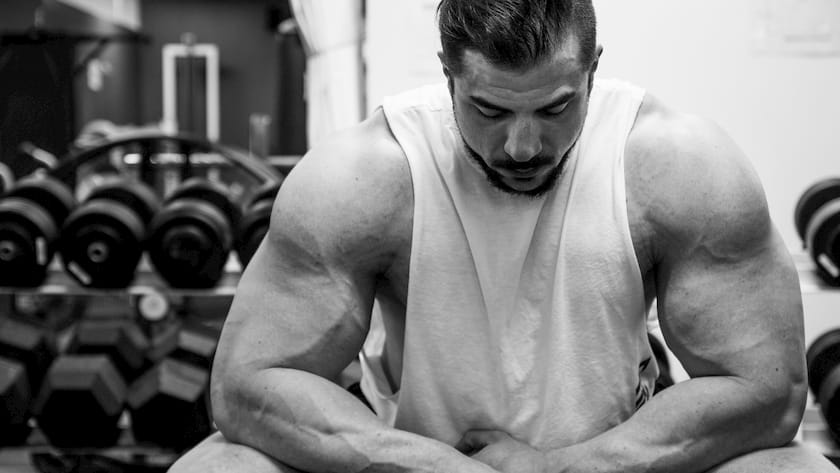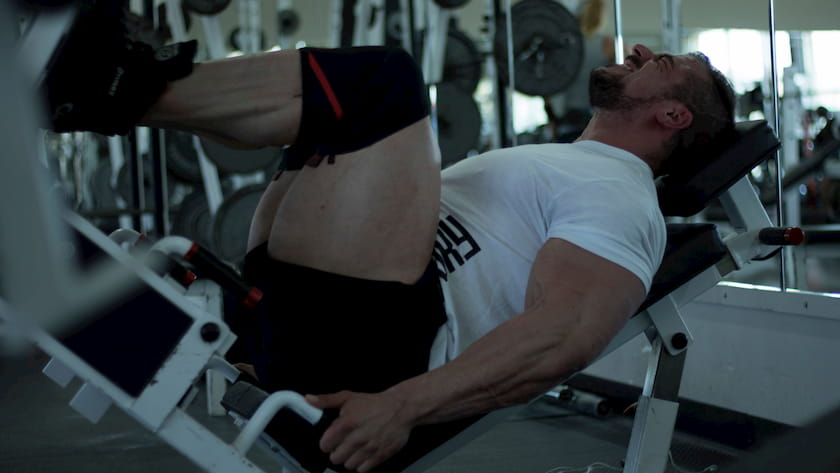When it comes to maximizing your lean muscle gains while cutting body fat, you need to follow a strict diet and training regimen.
This involves tracking your macros and the timing of when you consume your carbohydrates, protein, and healthy fats.
This article is going to break down a bodybuilding cutting diet. The goal of this diet is for you to maintain all of your lean muscle mass while slowly losing body fat. You will peak in about 8 weeks following this diet.
If you have around 12-14 percent body fat, expect to get to less than 10 percent body fat while keeping all of your lean muscle mass after 8 weeks of this regimen.
If you have around 10 percent body fat, expect to resemble a lean and chiseled fitness model after 8 weeks of following this regimen.
This is the ultimate cutting diet and will give you tremendous results without sacrificing any of the lean muscle gains that you have trained so hard for.
Issues With Cutting Diets
Lets first address the main issue with most cutting diets. If you have worked really hard to build a solid base of lean muscle mass, you could lose this muscle by improperly cutting. If you diet down too fast and don’t understand the science behind consuming certain macronutrients, it is very easy to lose muscle mass.
This is why we need a scientific approach to maximizing your fat loss while keeping (and in some cases building) lean muscle mass. Your ability to build lean muscle mass while on this bodybuilding cutting diet will depend on a number of factors.
These factors include your training intensity, bodybuilding split, supplementation, and sleep. These are the factors that will give you incredible results and will take your cutting diet to the next level.
For example, if you are able to train harder than most and get awesome sleep, there is no reason to think you can’t build some lean muscle mass while following this ultimate cutting diet.
If your training intensity suffers and you are not getting proper sleep, then expect to see slower results.
How Much Fat Can I Expect to Lose?
If you follow this bodybuilding cutting diet, you should expect to lose anywhere between 1-1.5 lbs of fat PER WEEK while maintaining all of your lean muscle mass. If you are losing more weight than this per week you are LOSING lean muscle mass.
It is very important that we don’t cut our calories more than 500 per day while following the bodybuilding cutting diet. This results in an approximate net loss of 3,500 calories per week, which equals 1 lb of fat.
Now depending on your training and cardio regimen, you may lose slightly more than this. If you can elevate your metabolism through advanced training strategies such as HIIT and plyometrics, which will boost your metabolism following the workout, it will be much easier to lose weight.
Carbohydrates and Cutting
Believe it or not, carbohydrates will play a very important role in our cutting diet during our training days.
Keep in mind that the goal of maintaining our lean muscle mass and having the energy for maximum intensity workouts is crucial for success on this diet.
There are a few times during the day that you will need to consume carbohydrates. This will maximize your energy levels and maintain your lean muscle mass.
The two times of the day when carbohydrate consumption is crucial is before your workout and after your workout. Let’s call this the 4-hour anabolic workout window, during which carbohydrate consumption becomes vital for boosting your body’s most important anabolic hormone: insulin.
On your heavy weight training days, you want to consume about 1 gram of carbohydrates per 1 lb of body weight during this 4-hour window. Unless of course, you’re following the keto diet and your body is running on ketones.
This can be broken up throughout a pre-workout meal 1-2 hours before your workout, a post-workout shake directly after your workout, and a post-workout meal about 1-2 hours after your workout.
The kind of carbohydrates that you consume become crucial during these times if you want to maximize your energy and post-workout insulin spike.
How to structure your carbohydrates around your workouts
For the pre-workout meal, you will want to consume about 25 percent of your carbohydrates in the form of slow-digesting and complex carbs. This means that you are consuming things like sweet potatoes, oatmeal, brown rice, quinoa, fresh fruit, lentils, quinoa, and whole grains.
These carbohydrate sources will give you a sustainable source of energy so you can train at maximum intensity.
Directly after your workout, you will want to consume about 35 percent of your carbohydrate intake in the form of a rapid digesting carbohydrate source.
This means that you will consume a simple sugar in the form of maltodextrin or dextrose along with your fast-digesting protein.
You will consume the rest of your carbohydrates in about 1-2 hours following your workout in the form of slow-digesting carbohydrates.
These will maintain your post-workout anabolic spike and will replenish your muscle glycogen so you can train at the maximum intensity the next day.
Fat and Protein Intake While Cutting

Protein rule of thumb
Your protein intake will be essential if you want to maintain all of your lean muscle mass while following this cutting diet.
A good rule of thumb is that you want to consume between 1-1.25 grams of protein per 1 lb of body weight. If you are a naturally skinny guy, you may want to keep this number closer to 1.25 per 1 lb of bodyweight.
Your protein intake should be spread throughout the day as you typically don’t’ want to consume more than 40-50 grams of protein per meal.
You want your body to be able to absorb and utilize your protein intake, so too much at 1 sitting becomes overkill.
Fat rule of thumb
During your cutting diet, you want to keep your fat intake very low, but high enough to maximize testosterone production. This means that you want to consume healthy fats that boost your hormones and provide your body with omega 3.
A good rule of thumb is that you want to consume about .25 grams of fat per 1 lb of body weight.
These healthy fats should be in the form of raw nuts, raw nut butter such as cashew, almond butter, peanut butter, avocado, olive oil, coconut oil, chia seeds, flax seeds, and as a by-product from consuming whole eggs and wild-caught salmon.
Stick with these healthy fats and you will be a machine during your cutting diet!
Here’s a quick summary of your macronutrient breakdown on the ultimate cutting diet:
- Carbohydrates: 1 gram per 1 lb of bodyweight
- Protein: 1-1.25 grams per 1 lb of bodyweight
- Fat: 0.25 grams per 1 lb of bodyweight
Other Rules on the Ultimate Cutting Diet
-
You want to make sure you are keeping your fat intake very low during your high carbohydrate meals. This is because insulin serves as a nutrient activator. When you are consuming your high carbohydrate meals around your workouts, you should keep your fat intake to a minimum.
-
Having low insulin levels for long periods of time is the key to burning fat. Obviously, you are consuming carbohydrates around your workouts. However, for the rest of the day, you should consume mostly healthy fats and lean proteins. This is the winning combination so you are able to both keep your lean muscle mass and quickly burn fat.
You can load up on veggies during these meals as they have a very minimal impact on insulin levels. A typical meal during these low insulin meals will be a lean protein such as chicken or fish topped with avocado and a spinach salad with light olive oil. This would be an ideal meal that would feed your body everything it needs to maintain lean muscle mass while keeping insulin at bay!
-
Perfect post-workout shakes are a great way to speed up your muscle building during this ultimate cutting diet. Keep in mind that insulin is highly anabolic following a workout, so after consuming a post-workout recovery supplement, we want to consume a shake that consists of a fast digesting protein source such as whey isolate and a rapid digesting carbohydrate source such as maltodextrin or dextrose. A 2:1 ratio of carbs to protein is ideal. For a 200 lb male, a shake consisting of 60 grams of carbs to 30 grams of protein would be perfect for recovery.




Leave a comment
All comments are moderated before being published.
This site is protected by hCaptcha and the hCaptcha Privacy Policy and Terms of Service apply.